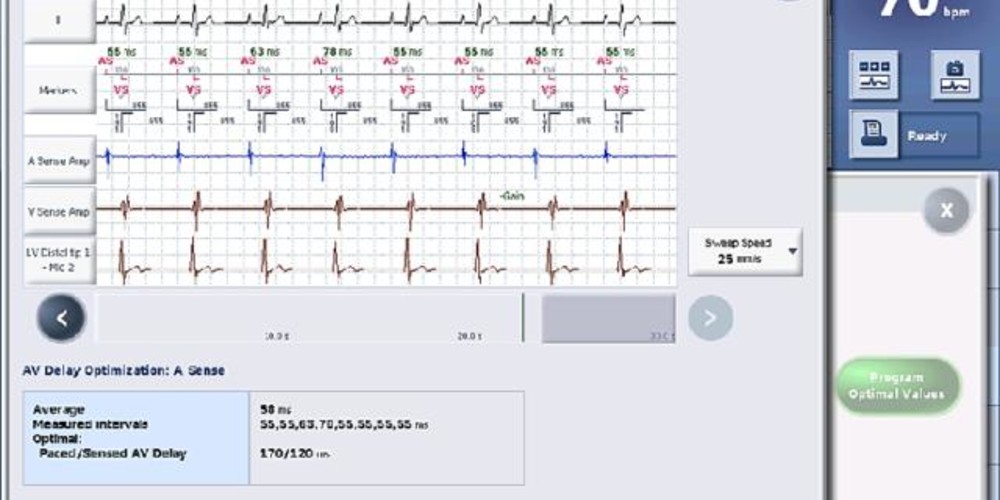optimization of the AV and VV delays in a recipient of Abbott defibrillator
Tracing
Manufacturer Abbott
Device CRT
Field AV & VV delays optimization
N° 10
Patient
Demo mode of Abbott triple chamber defibrillator. Optimization of the AV and VV delays, using the QuickOpt™ algorithm.

Graph and trace
- P-wave duration estimated from the atrial EGM. The algorithm functions properly when the P-wave duration is stable and regular, with ≤ 25 ms difference among the 8 measurements.
- measurement of the delay between RV and LV activation during spontaneous rhythm. The measurement is positive when LV is later than RV activation (reversed in this case, with an earlier activation of the left than the right ventricle).
- measurement of the RV-LV conduction time after RV stimulation.
- measurement of the LV-RV conduction time after LV stimulation.
- the device suggests optimized AV and VV delays from 3 formulas: optimal spontaneous AV delay = P-wave duration + 30 ms if the P-wave is > 100 ms, or P-wave duration + 60 ms if the P-wave is < 100 ms; optimal paced AV delay = optimal sensed AV delay + 50 ms; optimal VV delay = spontaneous ΔV + (tLR – tRL) ) / 2 (spontaneous ΔV = delay between RV and LV activation during spontaneous rhythm; tGD = delay between LV and RV activation after LV stimulation; tDG = delay between RV and LV activation after RV stimulation).
Other articles that may be of interest to you
EGM recordings
EGM recordings
EGM recordings




The QuickOpt™ algorithm bases its optimization of the paced and sensed AV delays on the P-wave duration measured from the atrial EGM and bases its optimization of the VV delay on the measurement of the interventricular activation delay measured during spontaneous rhythm, during RV stimulation and during LV stimulation. As in the case of the BiV optimization formulas of the algorithm developed by Medtronic or Boston Scientific, its pathophysiologic rationale remains unclear. It is, furthermore, highly likely that, in a given patient, the optimal AV/VV delays would differ, depending on the implanted device. This probably explains the negative results observed in the large trials completed thus far.